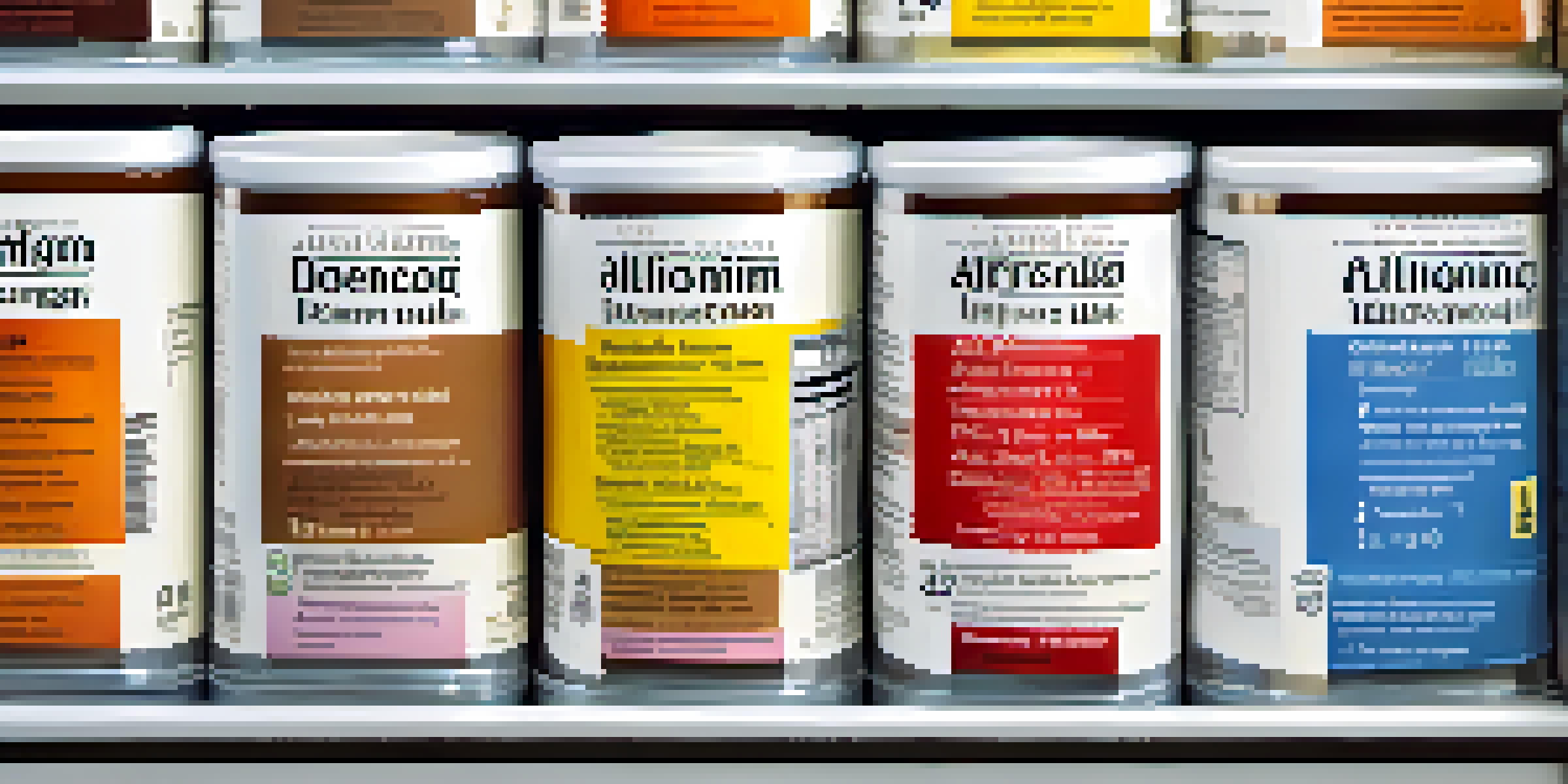How to Read Food Labels for Allergens: A Complete Guide

Understanding Allergens: Why It Matters
Food allergies can lead to serious health issues, making awareness crucial. Understanding common allergens helps you make safer food choices. Knowing what to look for on labels can prevent accidental exposure, which is vital for those with allergies.
The Basics of Food Labeling
Food labels provide essential information about a product, including ingredients and nutritional value. In many countries, regulations require that allergens be clearly stated, making it easier for consumers. Familiarizing yourself with label components is the first step to ensuring your safety.
Importance of Allergen Awareness
Understanding allergens is crucial for making safer food choices and preventing serious health issues.
Identifying Common Allergens on Labels
Common allergens include peanuts, tree nuts, milk, eggs, wheat, soy, fish, and shellfish. Look for these ingredients prominently listed on the label, often in bold. Some products may also include warnings like 'may contain' to indicate potential cross-contamination.
Reading the Ingredient List Carefully
Ingredients are listed in descending order by weight, meaning the first few items are the most prevalent. Pay close attention to these early ingredients, as they often contain allergens. If you're unsure about a term, a quick online search can clarify its origins.
Key Elements of Food Labels
Familiarizing yourself with food labels, especially allergen statements and ingredient lists, is essential for safety.
Recognizing Allergen Statements and Warnings
Allergen statements are often found below the ingredient list and can include phrases like 'contains' or 'may contain.' These notes help you quickly identify potential allergens. If a product has a warning, it’s best to err on the side of caution.
Informed Choices: Researching Brands
Some brands are more allergen-friendly than others, so doing a little research can go a long way. Look for brands that specifically market themselves as allergen-free. Reading reviews and seeking recommendations can help you find safer options.
Stay Updated on Food Products
Regularly checking food labels for recipe changes helps avoid accidental exposure to allergens.
Staying Updated: Changes in Recipes
Food manufacturers can change their recipes, which might alter allergen content. It's essential to regularly check labels, even for products you frequently purchase. Staying vigilant helps you avoid surprises and ensures your safety.
Where to Seek Help and Resources
If you're ever in doubt, resources like allergist websites and food allergy organizations can provide valuable guidance. Joining support groups can also help you connect with others facing similar challenges. Utilizing community knowledge can enhance your understanding of food safety.